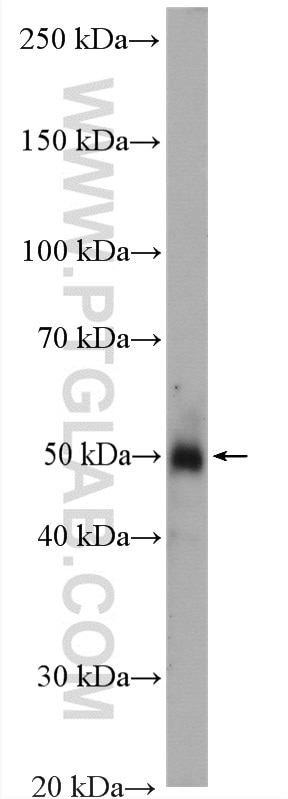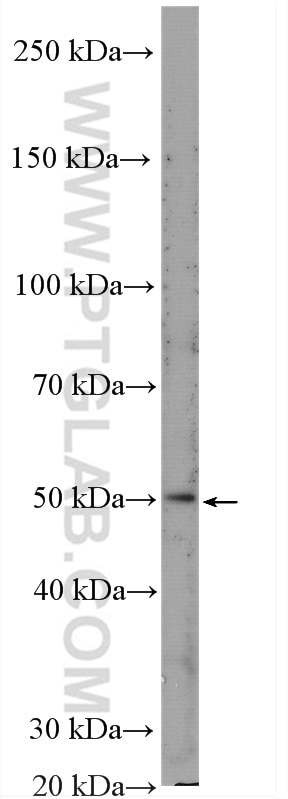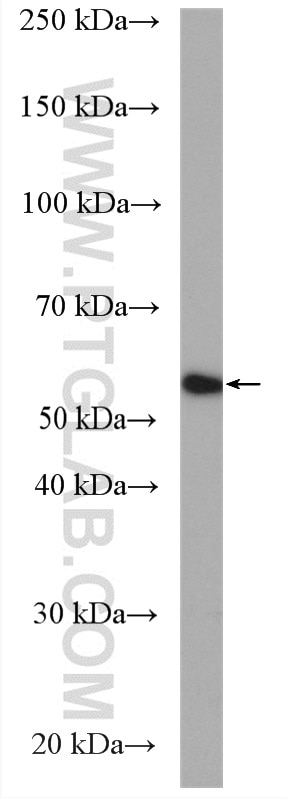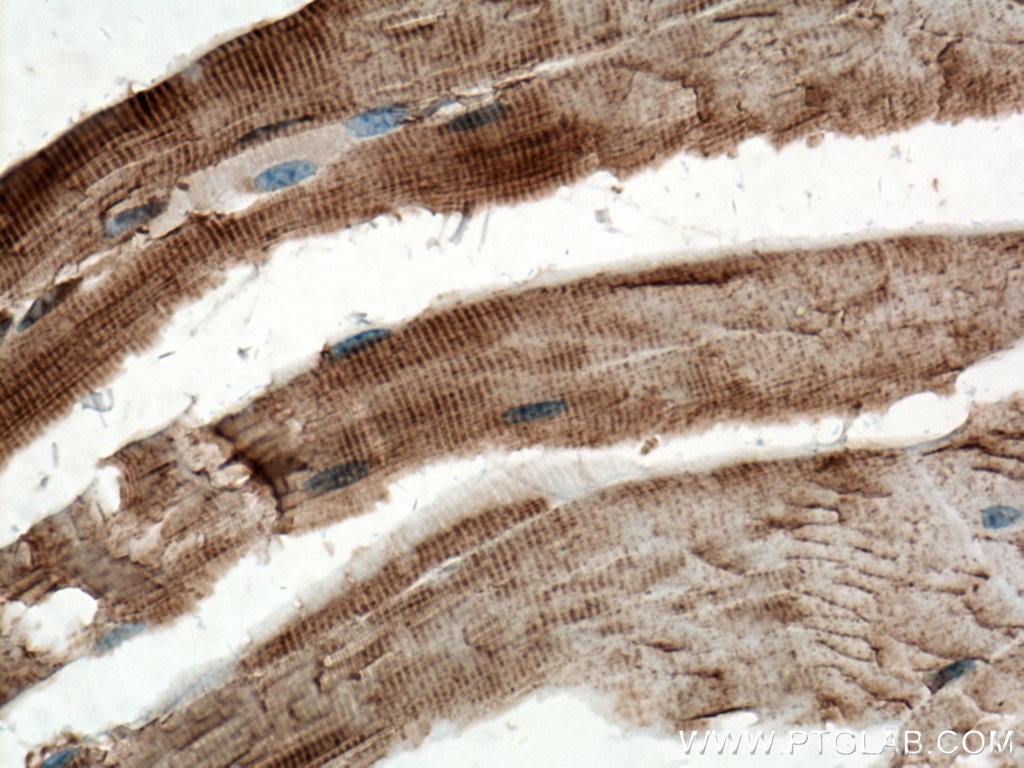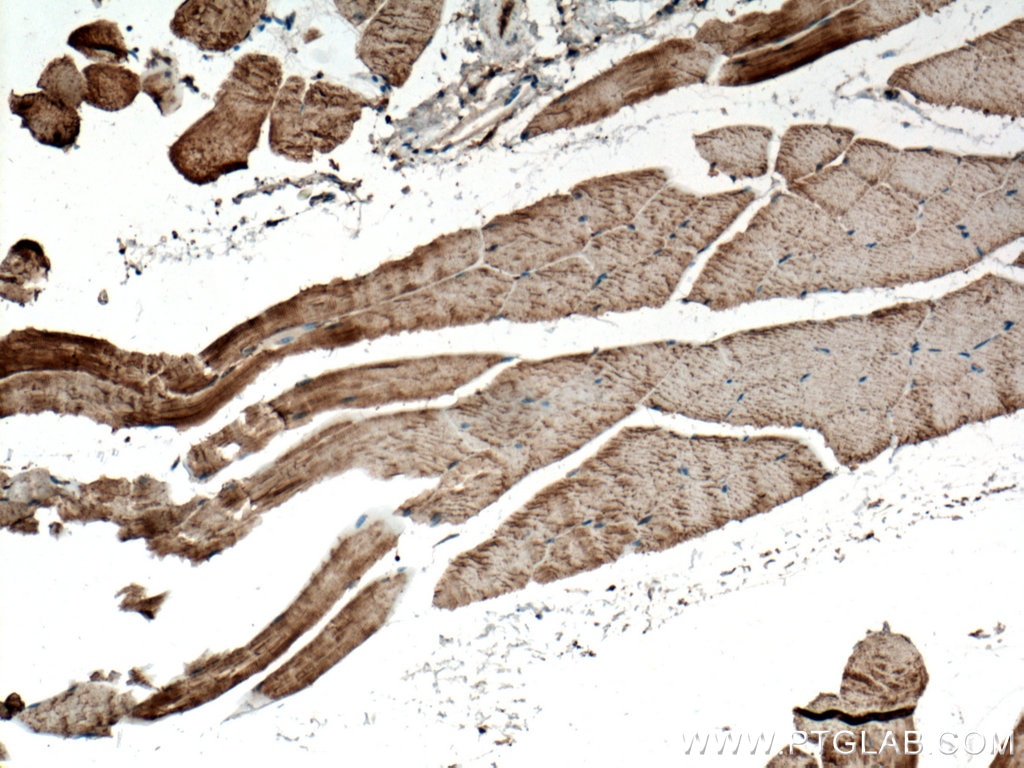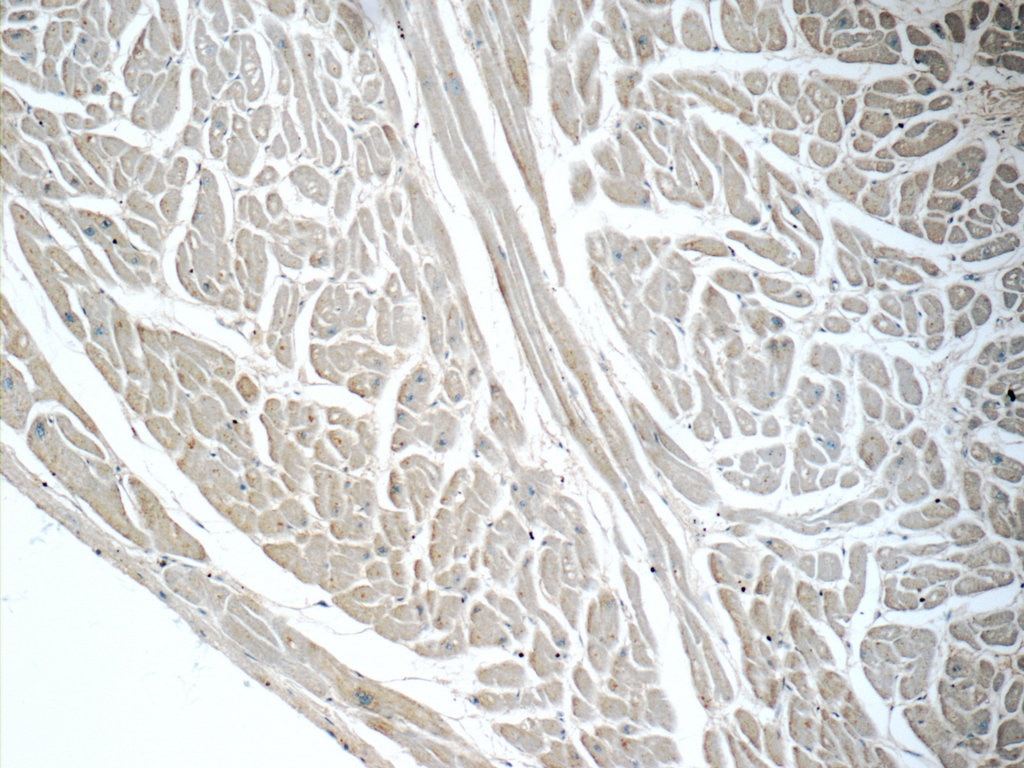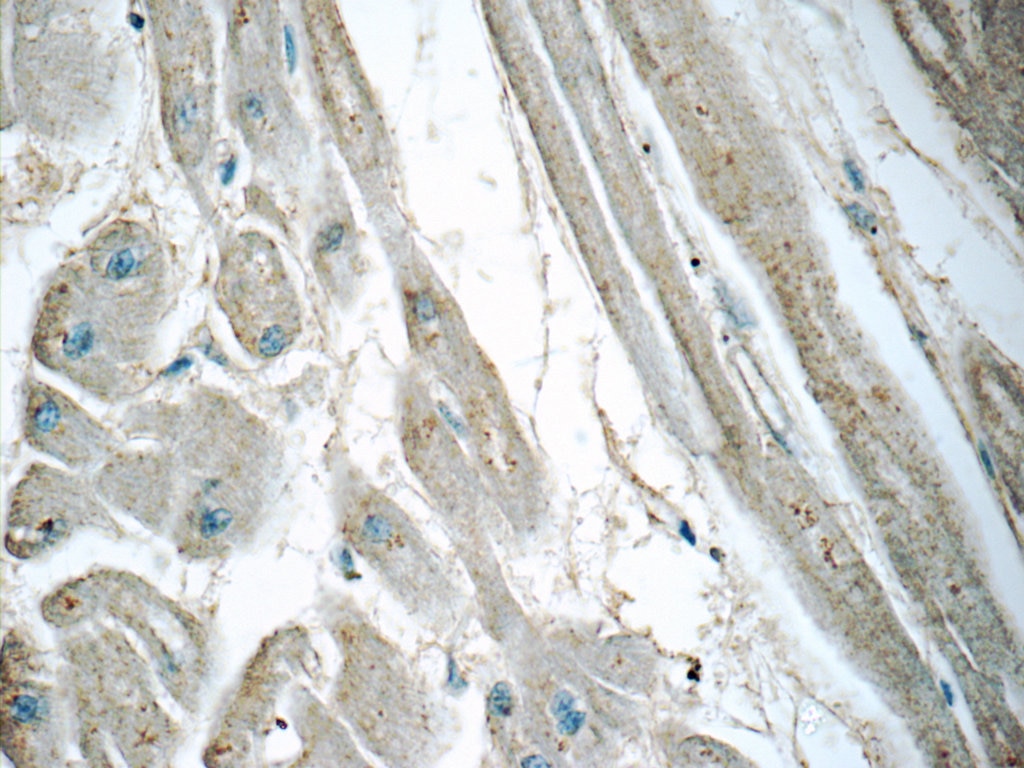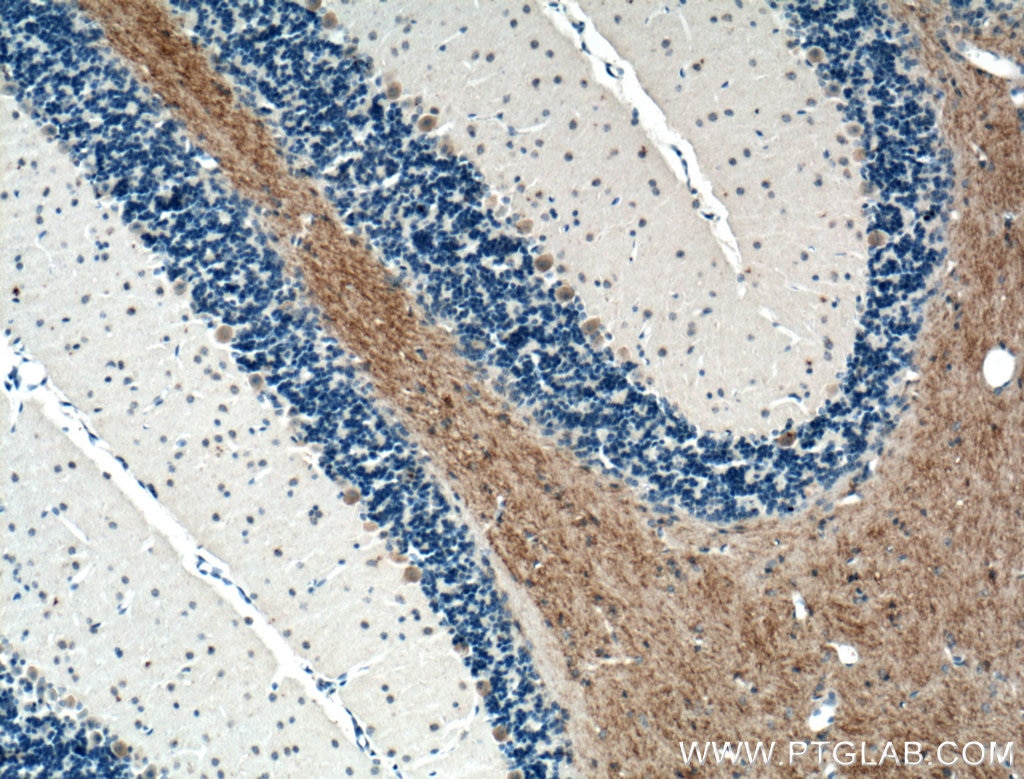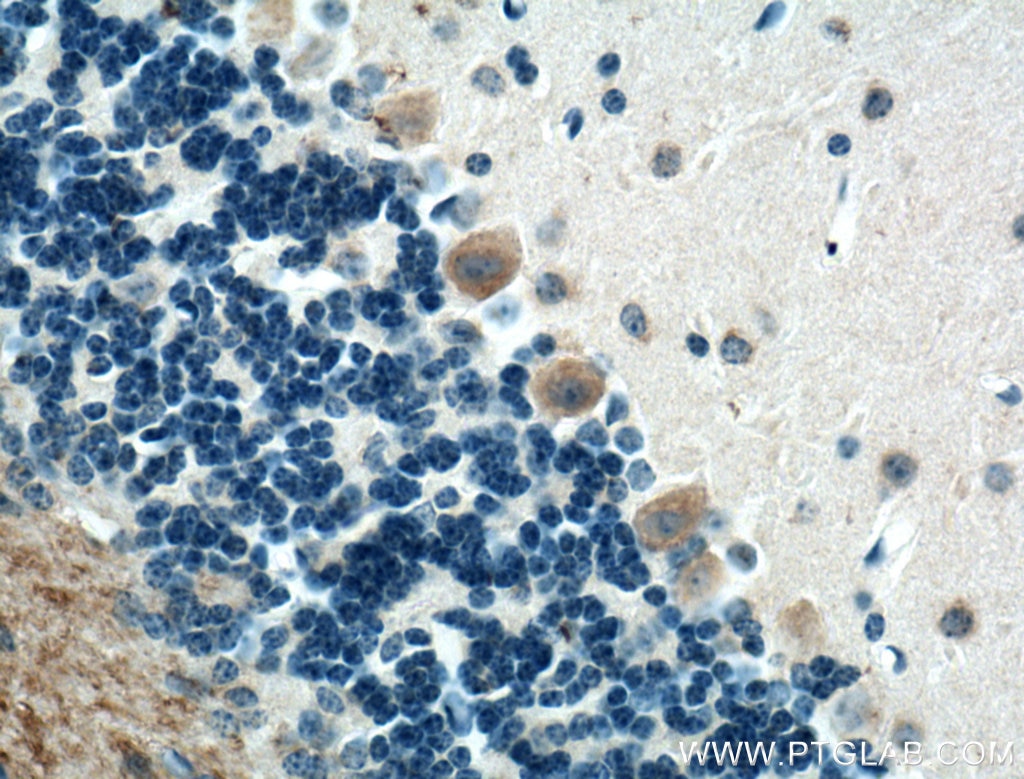Tested Applications
| Positive WB detected in | mouse adipose tissue, mouse brain tissue, rat brain tissue |
| Positive IHC detected in | mouse skeletal muscle tissue, mouse cerebellum tissue, human heart tissue Note: suggested antigen retrieval with TE buffer pH 9.0; (*) Alternatively, antigen retrieval may be performed with citrate buffer pH 6.0 |
Recommended dilution
| Application | Dilution |
|---|---|
| Western Blot (WB) | WB : 1:200-1:500 |
| Immunohistochemistry (IHC) | IHC : 1:50-1:500 |
| It is recommended that this reagent should be titrated in each testing system to obtain optimal results. | |
| Sample-dependent, Check data in validation data gallery. | |
Published Applications
| IHC | See 2 publications below |
| IF | See 1 publications below |
Product Information
21048-1-AP targets GLUT4 in IHC, IF, ELISA applications and shows reactivity with human, mouse, rat samples.
| Tested Reactivity | human, mouse, rat |
| Cited Reactivity | human, mouse, rat, lasiopodomys brandtii |
| Host / Isotype | Rabbit / IgG |
| Class | Polyclonal |
| Type | Antibody |
| Immunogen |
CatNo: Ag15390 Product name: Recombinant human GLUT4 protein Source: e coli.-derived, PGEX-4T Tag: GST Domain: 228-292 aa of BC069615 Sequence: RYLYIIQNLEGPARKSLKRLTGWADVSGVLAELKDEKRKLERERPLSLLQLLGSRTHRQPLIIAV Predict reactive species |
| Full Name | solute carrier family 2 (facilitated glucose transporter), member 4 |
| Calculated Molecular Weight | 509 aa, 55 kDa |
| Observed Molecular Weight | 50-55 kDa |
| GenBank Accession Number | BC069615 |
| Gene Symbol | GLUT4 |
| Gene ID (NCBI) | 6517 |
| RRID | AB_2878802 |
| Conjugate | Unconjugated |
| Form | Liquid |
| Purification Method | Antigen affinity purification |
| UNIPROT ID | P14672 |
| Storage Buffer | PBS with 0.02% sodium azide and 50% glycerol, pH 7.3. |
| Storage Conditions | Store at -20°C. Stable for one year after shipment. Aliquoting is unnecessary for -20oC storage. 20ul sizes contain 0.1% BSA. |
Background Information
Glucose transporter 4 (GLUT4), also known as solute carrier family 2, facilitated glucose transporter member 4 (SLC2A4), is a transporter protein regulating glucose transport across cell membranes in an insulin-dependent manner.
What is the molecular weight of GLUT4? Is GLUT4 post-translationally modified?
The molecular weight of GLUT4 transporter is 55 kDa. GLUT4 can be N-glycosylated, which is important for its stability and trafficking between the recycling compartment and plasma membrane (PMID: 21757715 and 22545627), and it can also be ubiquitinated and phosphorylated (PMID: 23665900).
What is the subcellular localization of GLUT4?
Glucose transporters, including GLUT4, are multiple-pass integral membrane proteins. GLUT4 is present at the plasma membrane but is also a subject of recycling between plasma membrane and endosomes. The localization of GLUT4 depends on stimulation with insulin - in basal conditions GLUT4 is retained intracellularly, while upon insulin stimulation it is translocated to the plasma membrane (PMID: 18570632).
What molecules can be transported by GLUT4?
Although the main substrate of GLUT4 transport is glucose, it can also transport glucosamine.
What is the tissue expression pattern of GLUT4?
GLUT4 is expressed in white and brown adipose tissue and in muscle and heart cells, where it is the main glucose transporter responsible for peripheral glucose uptake in response to insulin.
Which cell lines can be used to study insulin-dependent GLUT4 protein translocation in glucose uptake assays?
Fat and muscle cells are primarily used in glucose uptake assays because they physiologically respond to insulin (PMID: 26646194). The most commonly used cell lines are 3T3-L1 cells (murine pre-adipose fibroblasts), L6 cells (rat myoblasts), and C2C12 cells (murine myoblasts).
Protocols
| Product Specific Protocols | |
|---|---|
| IHC protocol for GLUT4 antibody 21048-1-AP | Download protocol |
| WB protocol for GLUT4 antibody 21048-1-AP | Download protocol |
| Standard Protocols | |
|---|---|
| Click here to view our Standard Protocols |
Publications
| Species | Application | Title |
|---|---|---|
Biomed Pharmacother Qing brick tea (QBT) aqueous extract protects monosodium glutamate-induced obese mice against metabolic syndrome and involves up-regulation Transcription Factor Nuclear Factor-Erythroid 2-Related Factor 2 (Nrf2) antioxidant pathway. | ||
J Hematol Oncol The PIK3CA E542K and E545K mutations promote glycolysis and proliferation via induction of the β-catenin/SIRT3 signaling pathway in cervical cancer. | ||
Development LONP1-mediated mitochondrial quality control safeguards metabolic shifts in heart development. | ||
Cell Physiol Biochem PGC-1α Participates in the Protective Effect of Chronic Intermittent Hypobaric Hypoxia on Cardiomyocytes. | ||
Food Chem Toxicol 3-Chloro-1, 2-propanediol inhibits autophagic flux by impairment of lysosomal function in HepG2 cells. | ||
J Cell Mol Med FGF19 protects skeletal muscle against obesity-induced muscle atrophy, metabolic derangement and abnormal irisin levels via the AMPK/SIRT-1/PGC-α pathway. |

